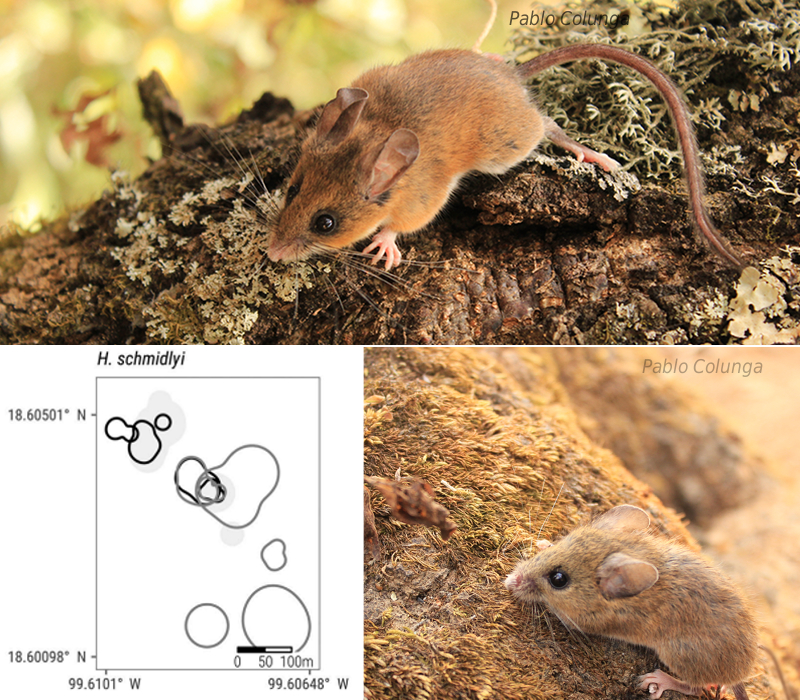Last week, the article “Space use by two arboreal rodent species in a Neotropical cloud forest” was published in the latest issue of the Journal of Natural History. This work is a collaboration between mammalogists at the Universidad Nacional Autónoma de México (UNAM) and Ecosur, and I was invited to collaborate. This paper, led by Tania Marines-Macías, is a really nice integration of two B.Sc. thesis projects, describing the movement ecology and habitat features for two arboreal rodents in Central/Southern Mexico.
Here’s the link to the full-text article, and a PDF copy is available here.
We studied two Neotomine-peromyscine cricetids: Habromys schmidlyi and Reithrodontomys microdon. In general, we don’t know much about the ecology of most arboreal small mammals, and there are few studies with rodents in Mesoamerica. We found vertical stratification in the rodent community in this particular study site, and provide the first published estimates of home range sizes and preferences for particular forest strata for these two species.
Both species had home range ares of roughly 0.5 ha, but this includes going up and down the trees in the cloud forest. Harvest mice in the genus Reithrodontomys are known to be good climbers, but it was still surprising to see that R. microdon likes to hang out high up in the forest canopy (11 to 20 meters), while H. schmidlyi were more abundant in the understory (up to 10 meters high).

Why is this a big deal
There are seven species of arboreal deer mice in the genus Habromys. Six of these are endemic to Mexico, and all six are highly threatened with extinction (either Endangered or Critically Endangered in the IUCN Red List). In fact, these species were identified among the top ten priority species of threatened small mammals in Mexico during a workshop organized last month by the IUCN Small Mammal Specialist Group. During the workshop, the main course of action for these species was to learn more about them, because not much is known about the genus in general. This is mostly because of their restricted distributions and secretive arboreal habits. However, we showed in the paper that with adecuate trapping in the forest canopy and some basic telemetry, we can find out important life history and population parameters that can inform conservation actions.
This is also a big deal for me because it is the first paper (of many) in which I worked with the mammalogy department where I started my scientific training and research career. I’m happy to finally have a publication on the record with my BSc thesis supervisor and long-time mentor Dr. Livia León Paniagua, who is coincidentally the specialist in all things Habromys.
More information about the research group is available here, but feel free to contact me if you would like to know more about the methods, the figures, or the authors.
Citation info: Tania Marines-Macías, Pablo Colunga-Salas, Luis D. Verde Arregoitia, Eduardo J. Naranjo & Livia León-Paniagua (2018) Space use by two arboreal rodent species in a Neotropical cloud forest, Journal of Natural History, 52:21-22, 1417-1431, DOI: 10.1080/00222933.2018.1459921
